 At any given point in time, there are billions of information transactions happening online. New information is constantly being published on social streams, news sites, and websites, and some of that information is related to subjects that matter to you.
At any given point in time, there are billions of information transactions happening online. New information is constantly being published on social streams, news sites, and websites, and some of that information is related to subjects that matter to you.
Is there a simple and easy way to know what is new in your niche or industry so that you are not wasting a huge amount of time doing research? Yes, there is, and it’s called …
Google Alerts
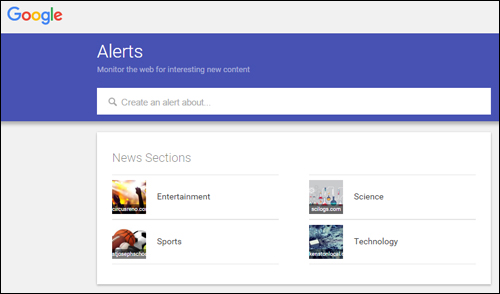
(Google Alerts lets you monitor the web for new content)
Google sends a notification when there are new results for your searches, so you can monitor blogs, social media conversations, and news.
Google Alerts is not only only a useful tool for managing your reputation online, but also for sourcing news about people, companies, or any topic you need to know about.
With Google Alerts, you subscribe to a keyword or topic and you’re done. Whenever Google’s indexing robots crawl a new web page, blog post, news update, press release, a tweet, video, or any other indexable content related to the topic you’ve subscribed to, you will automatically receive an email or RSS update.
A Quick Step-By-Step Tutorial On Setting Up A Google Alert
Basically, there are only three simple steps required to start using Google Alerts:
Step 1 – Log Into Your Google Account
If you don’t have a Google account, create one. Google lets you access many free services with just one username and password. If you use Gmail, post videos to YouTube, run Adwords or own a GooglePlus page, then you should already have a Google account set up.
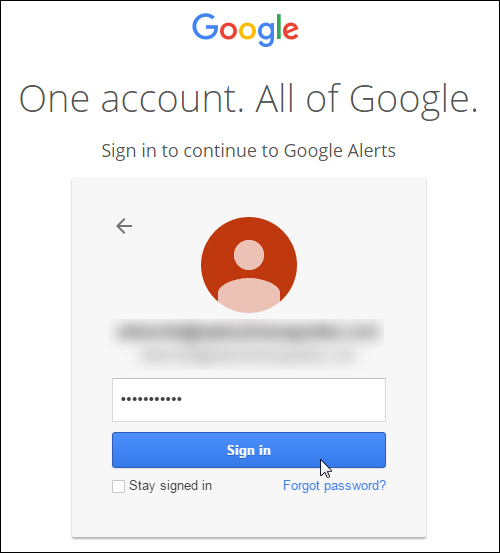
(A Google account lets you access services like Google Alerts)
![]()
You can still set up Google Alerts without a Google Account, but this will give you fewer configuration options (e.g. you can’t receive Google Alerts via RSS, only email).
After logging into into your Google Account, access the Google Alerts tool here:
Step 2 – Set Up An Alert
You can set up alerts for every topic, business name, person or web address you want to track. You can track brands, employees, investors, competitors, influencers, celebrities, etc. There are no limits to the number of alerts you can set up.

(Google Alerts lets you create as many alerts as you like)
Step 3 – Set Up Your Preferences & Save
Google Alerts lets you specify the keyword(s) you want alerts sent for, how often alerts should be sent (as it happens, once a day, once a week), sources (e.g. automatic, news, blogs, web, videos, discussions, etc.), language, region, how many (all results, only the best results), and how to receive alerts (via email or RSS feed) …
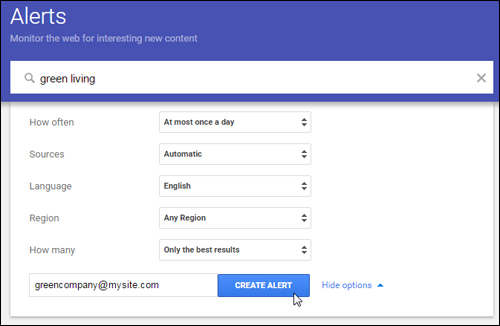
(Google Alerts – preferences)
To narrow where Google sources the information for your alerts, select the source from the drop-down menu …
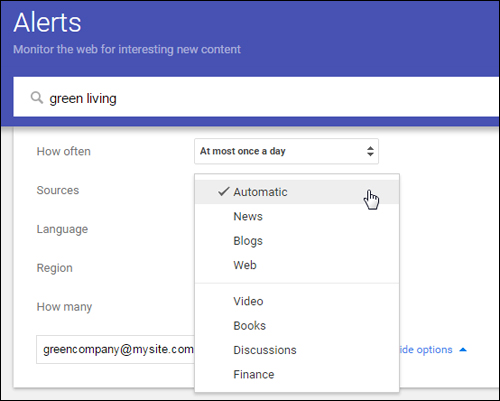
(Google alert sources)
You can also specify alert delivery times in your settings, and whether these should be sent as a single email …
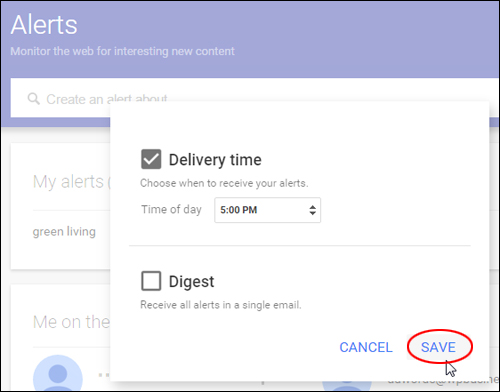
(Google alert settings)
You can change these settings at anytime.
You should begin receiving alerts as per your preferences …
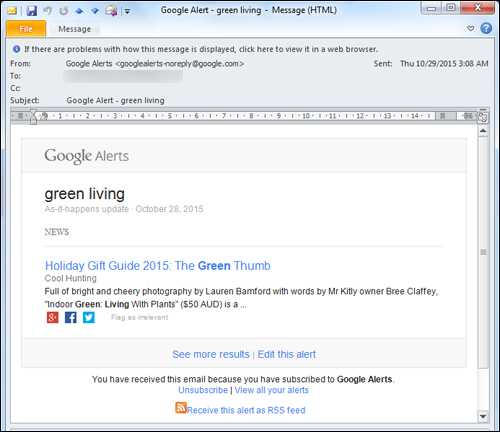
(Google alerts – email alert)
Note that at the bottom of your email notification, you are given various options, including:
- See more results
- Edit the alert
- Unsubscribe (stop receiving the alert)
- View all your alerts
- Receive the alert as RSS feed
How To Set Up Google Alerts While Browsing Google
You can easily set up Google Alerts while browsing the web. Here’s how:
Go to Google News and type in your search term …
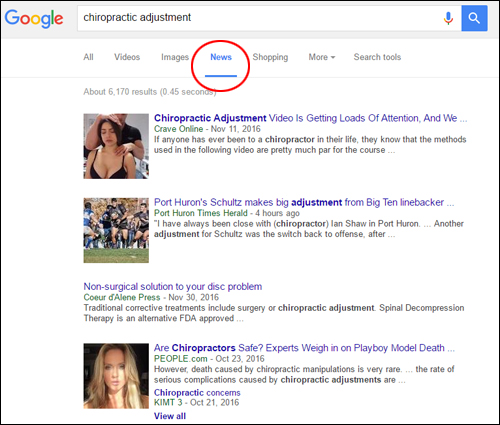
(Enter a search term in Google News)
Scroll down to the bottom of the page and click on ‘Create Alert’ …

(Google News – Create Alert)
Type in your email address and click on the ‘Create Alert’ button …
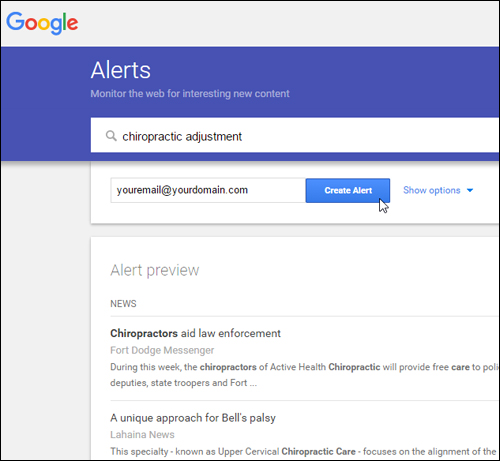
(Google Alerts screen)
If you elect to receive alerts via email, you will be asked to verify your Google Alert request …

(Verify your Google Alert request)
After confirming your request, your Google Alert will be set up and you will begin to receive alert notifications via email.
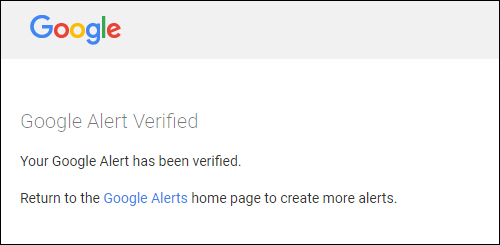
(Your Google Alert has been successfully verified)
You can return to the Google Alerts home page and create as many alerts as you want.
How To Delete Google Alerts
You can stop receiving alerts by deleting them from your account …
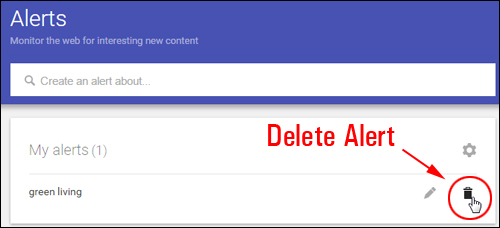
(Google Alerts – settings)
You can also stop receiving alerts by clicking on the ‘Unsubscribe’ link at the bottom of your emails …
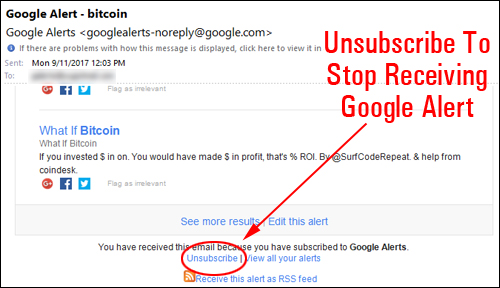
(Click the Unsubscribe link at the bottom of the email)
Confirm that you want to unsubscribe from your Google Alert …
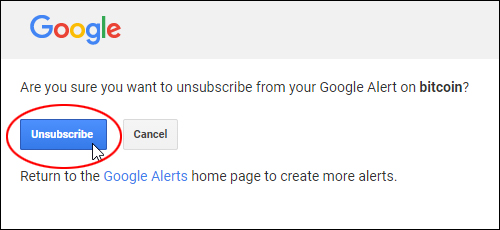
(Click unsubscribe to stop receiving Google Alerts)
Your Google Alert will be cancelled …

(Google Alert cancelled)
You will no longer receive alert emails on the topic from Google after unsubscribing.
![]()
If you want alerts to be delivered via email, you can configure rules in your email program to redirect alerts automatically to one or more folders. This helps keep your alerts organized and easier to track and sort through.
If your alerts are sent out via RSS feed, you can use a feed reader to access the information on your smart phone or mobile device.
Once you have set up alerts, you can monitor information about topics, businesses, the competition, etc., or start creating content in your niche/industry.
How To Publish News Items From Google Alerts On Your Site
You can publish news items directly from Google Alerts on your WordPress your blog as blog posts or as a ‘widgetized’ item on your sidebar.
Let’s take a look at both methods:
Publish Google Alerts News Items As A Blog Post
To display news items from Google Alerts as a blog post, do the following:
Configure your site to post by email …

(Post to WordPress by email)
If you need help with this step, see this tutorial:
Next, create an Alert to send to the email address you have set up …

(Create Alert and send to email)
Alerts will now be posted to your site, or come in as ‘drafts’ that you can review and publish.
Publish Google Alerts News Items On Your Sidebar
To display news items from Google Alerts as a as a ‘widgetized’ item on your sidebar, all you need to do is set up to receive your alerts as an RSS feed as described earlier …

(Receive alerts as an RSS feed)
Next, copy the RSS feed link to your clipboard …
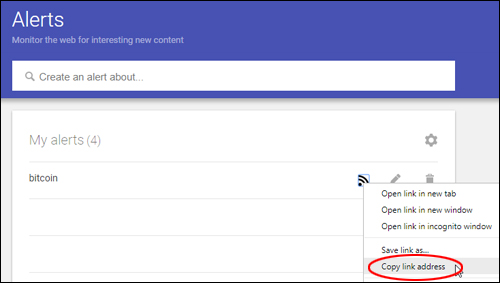
(Copy RSS link address)
And add the RSS feed to an RSS widget as described in this tutorial:
Your alert will display as a ‘widgetized’ item on your sidebar and the feed will update regularly as Google sources new items …

(RSS Widget with Google Alert feed)
Hopefully, this article has been helpful. If you would like to know more about using social monitoring tools to monitor social signals, see this article: 30 Media Tools For Business Owners

***
"This is AMAZING! I had learnt about how to use WordPress previously, but this covers absolutely everything and more!! Incredible value! Thank you!" - Monique, Warrior Forum
***